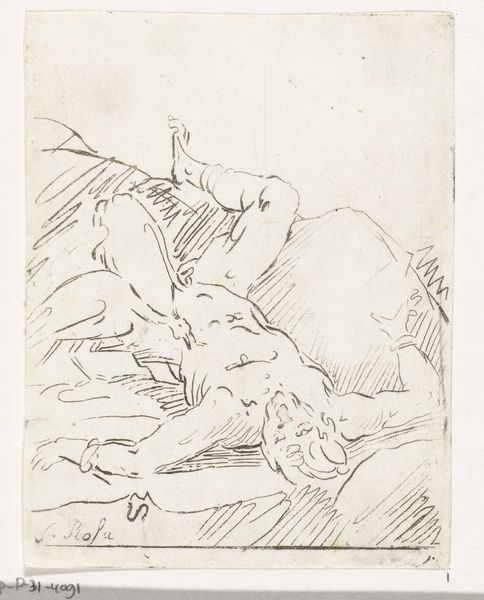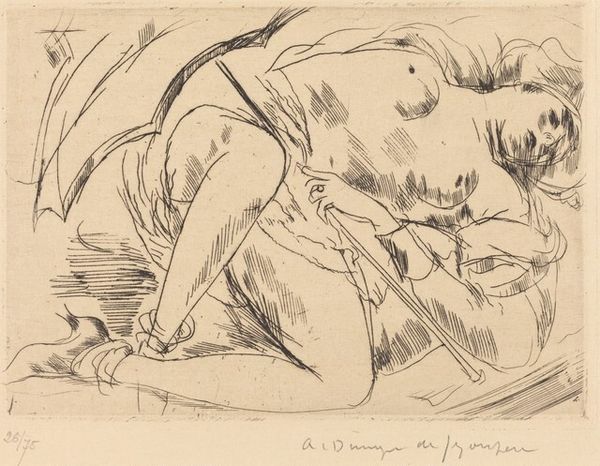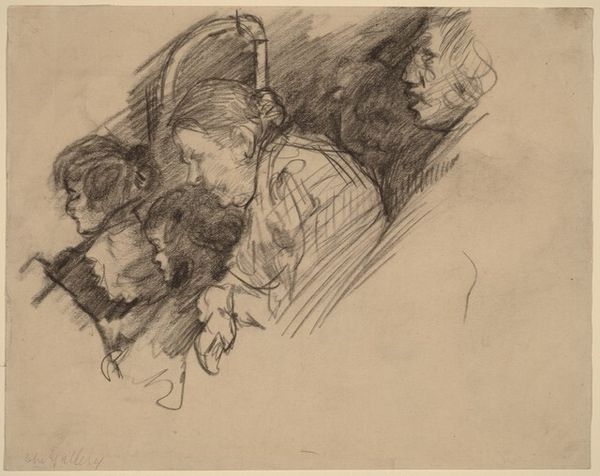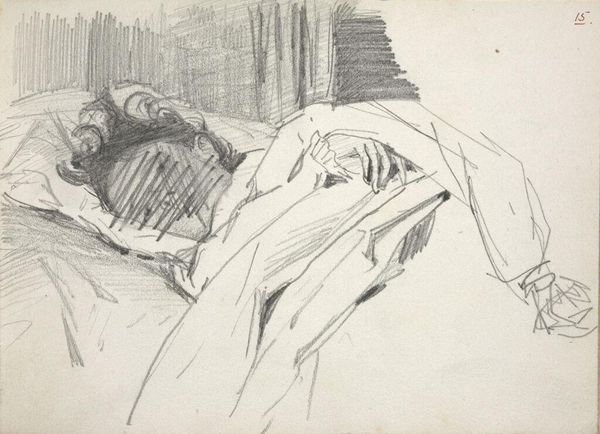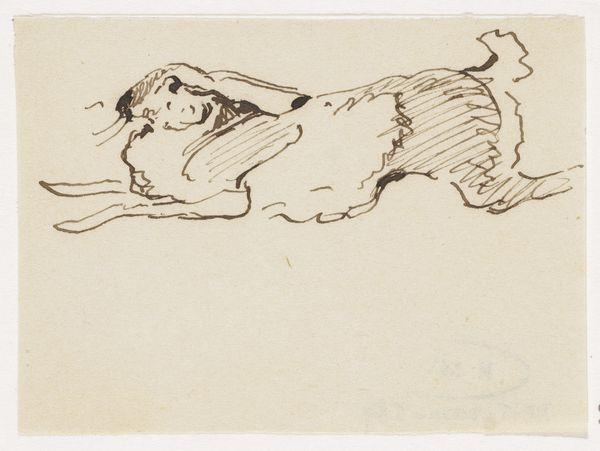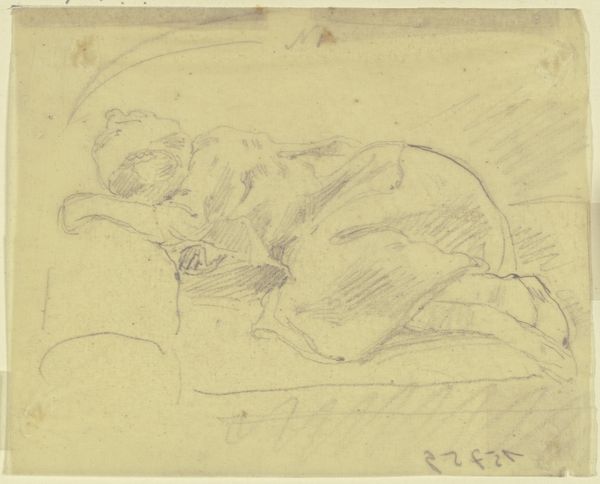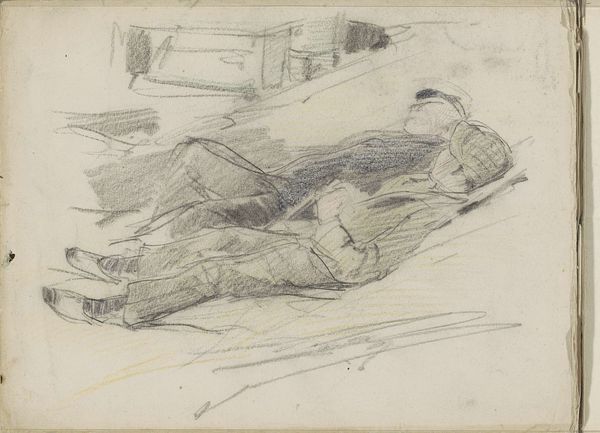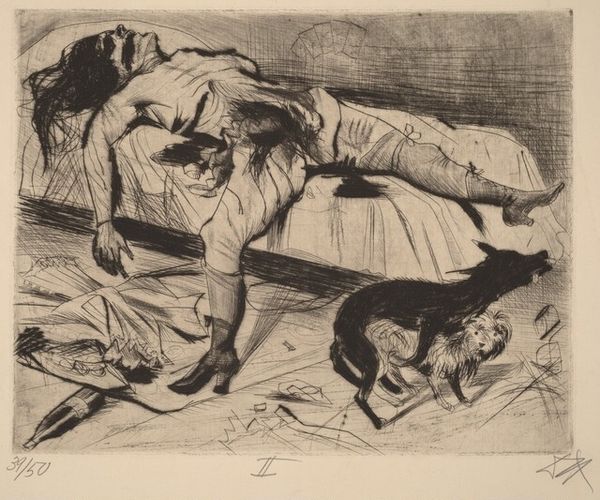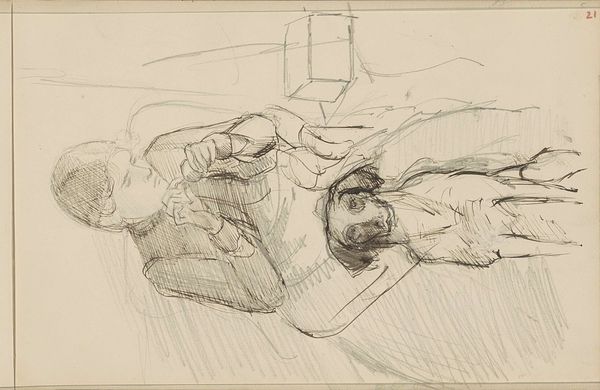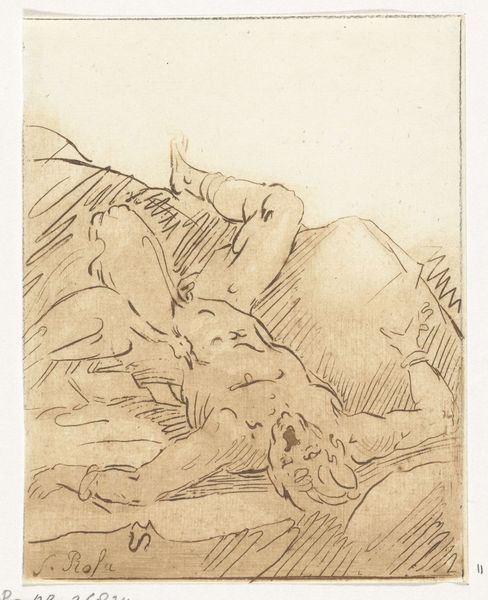
drawing, paper, ink
#
portrait
#
drawing
#
narrative-art
#
paper
#
ink
#
expressionism
#
genre-painting
Copyright: Public Domain: Artvee
Editor: This is "The Sick Child," an ink drawing on paper created in 1918 by Lovis Corinth. There's such a somber and intimate feel to this portrait, created by the sketchy, almost frantic lines. What are your initial thoughts about this work? Curator: It's difficult to separate this image from its historical context. Created at the tail end of World War One, a period marked by widespread disease and suffering, it’s impossible to ignore the social commentary embedded within what appears to be a personal portrait. How does Corinth use the conventions of portraiture to reflect on larger social anxieties of the time, do you think? Editor: I hadn't considered it in relation to the war directly, but it definitely speaks to broader themes of vulnerability. Is the focus on the illness itself, or more on the impact of sickness and mortality during that time? Curator: I'd argue it's both inextricably linked. Consider the rise of Expressionism, and its fascination with intense emotion. The political climate, combined with anxieties about personal and collective health, created fertile ground for exploring psychological states through art. What do you observe about the gaze, or lack thereof, and what that communicates to a contemporary viewer? Editor: It's averted, internal… she’s lost in her own experience. I guess it speaks to the isolation of sickness but also maybe a broader societal feeling of helplessness at the time? Curator: Precisely! And how the institutions of the art world allowed these anxieties to be explored and made visible, and even normalized, for the public. Art becomes a mirror reflecting societal concerns back to itself. Editor: That's a powerful perspective. I always saw it as a simple expression of grief, but now I realize it's also a document of its time, shaped by both personal experience and larger historical forces. Curator: Indeed. It’s a reminder that art is rarely created in a vacuum and this understanding adds so much richness to how we engage with the art today.
Comments
No comments
Be the first to comment and join the conversation on the ultimate creative platform.
